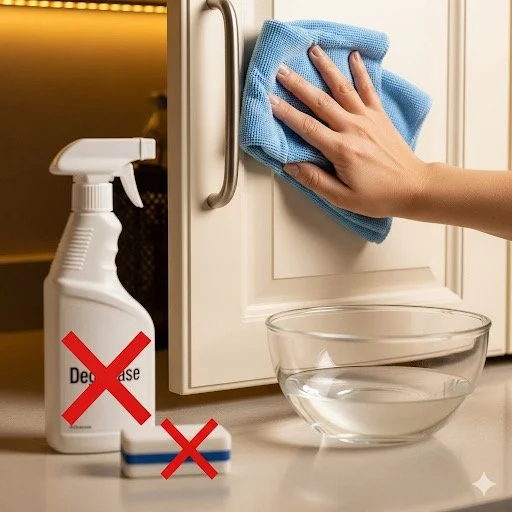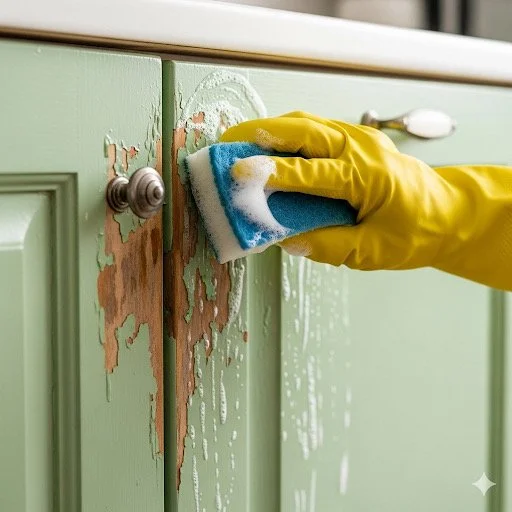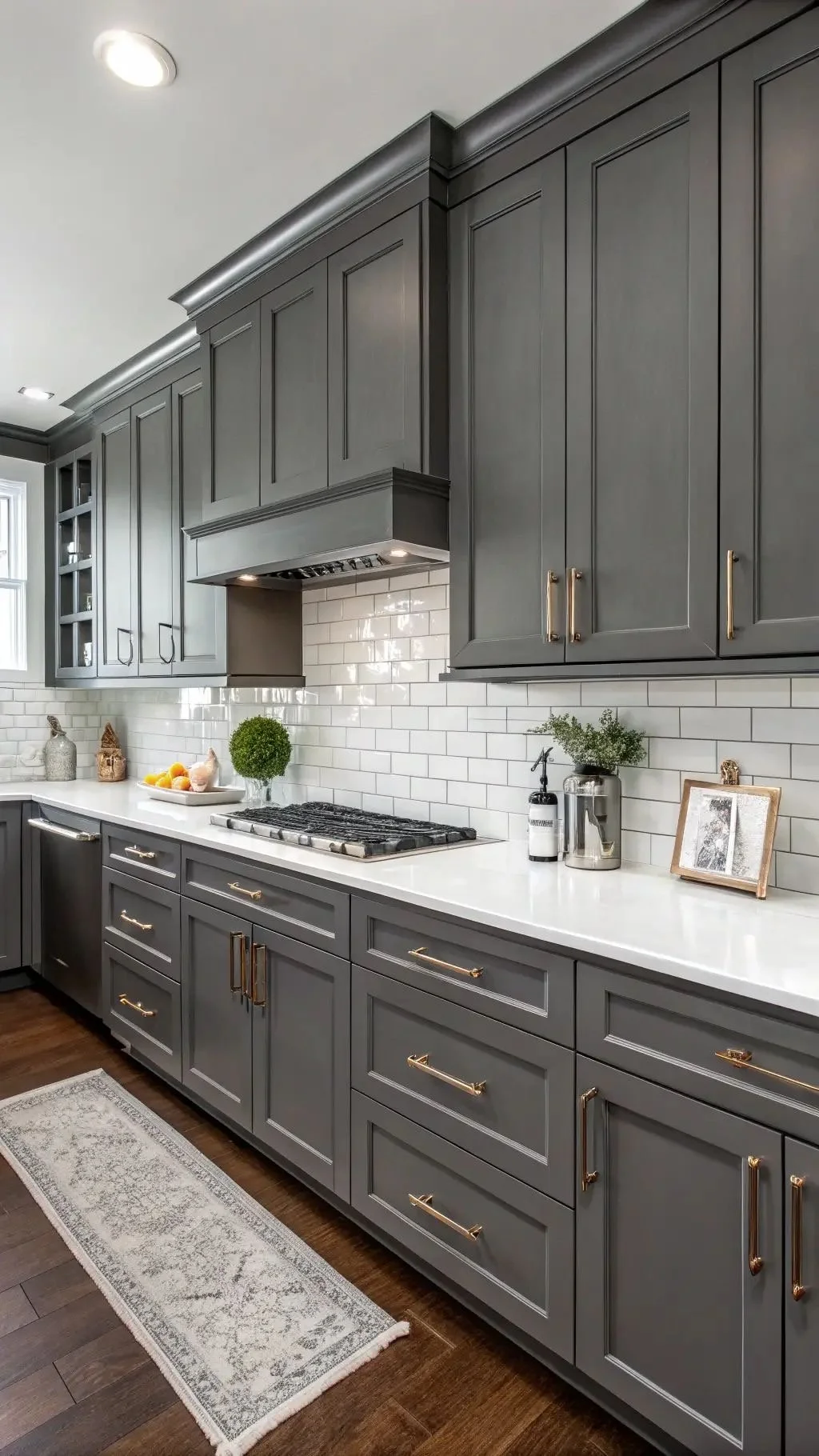Nurturing Your New Finish: The Gentle Care Guide for Painted Cabinets
You've just invested in a stunning fresh coat of paint for your cabinets, and they look absolutely fantastic! Now, let's talk about how to keep them looking that way for years to come. Proper care is key, and we're here to share some simple, effective tips to ensure your painted cabinets remain beautiful and durable.
Your Best Friends: Microfiber Cloth and Warm Water
When it comes to cleaning your freshly painted cabinets, think gentle. Your absolute best friends are a soft microfiber cloth and warm water. This simple combination is incredibly effective at removing dust, light smudges, and everyday grime without compromising the paint finish.
Why Microfiber and Warm Water?
Gentle Power: Microfiber cloths are designed with tiny fibers that effectively lift and trap dirt without scratching surfaces. Warm water helps to loosen grime, making it easier to wipe away.
No Residue: Unlike many cleaning products, water leaves no residue that can attract more dust or potentially damage the paint over time.
What to Avoid (And Why!)
Now, just as important as knowing what to use is knowing what not to use. Please, steer clear of the following:
Magic Erasers: While these can be incredibly effective on some surfaces, they are highly abrasive. Using a Magic Eraser on painted cabinets is akin to using very fine sandpaper, and it will remove the paint finish, leaving dull spots and potentially exposing the underlying surface.
Harsh Soaps, Degreasers, and Abrasive Cleaners: Products containing strong chemicals, ammonia, or abrasive particles can break down the paint's protective layer. This can lead to discoloration, dullness, or even paint peeling. Degreasers are particularly aggressive and can strip away the paint's adhesion, especially on a delicate finish.
The "Why": Understanding Paint Curing
The reason for such a gentle approach, especially in the initial stages, lies in how paint dries and "cures."
When paint feels dry to the touch, it means the solvents have evaporated, and the surface is no longer wet. However, the paint is still undergoing a chemical process called "curing." During this time, the paint hardens and forms its final durable finish. This curing process can take significantly longer than the initial drying time – often 15 days or even longer depending on the type of paint and environmental conditions.
During this curing period, the paint is more vulnerable to damage from harsh cleaners or aggressive scrubbing. While it will feel dry, it hasn't reached its maximum hardness and resistance to chemicals.
Our Recommendations for Long-Lasting Beauty:
Picture from Pinterest DIY|Home Decor|Home Improvement
Dust Regularly: A quick wipe down with a dry microfiber cloth once a week will prevent dust buildup and reduce the need for more intensive cleaning.
Spot Clean with Warm Water: For spills or smudges, immediately wipe with a damp (not soaking wet) microfiber cloth and warm water.
Avoid Harsh Chemicals: Stick to your microfiber and warm water routine. If you encounter a stubborn mark that warm water won't budge, try a very mild, non-abrasive dish soap diluted heavily in water, applied sparingly, and rinsed immediately with a clean, damp cloth. Always test in an inconspicuous area first.
Be Patient During Curing: For the first 15 days after painting, be extra gentle with your cabinets. Avoid any scrubbing or using even mild cleaners if possible. This patience will pay off with a much more durable and long-lasting finish.
By following these simple guidelines, you can ensure your beautifully painted cabinets remain a highlight of your home for many years to come!



